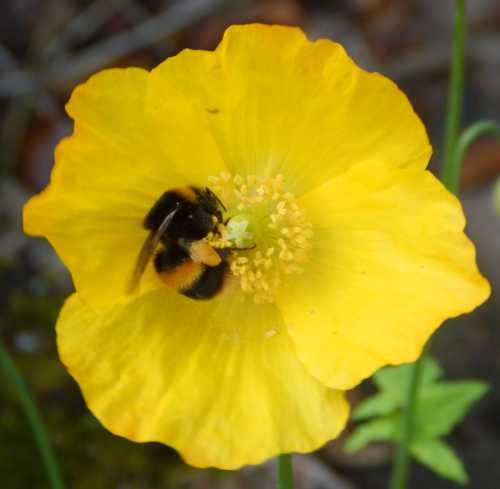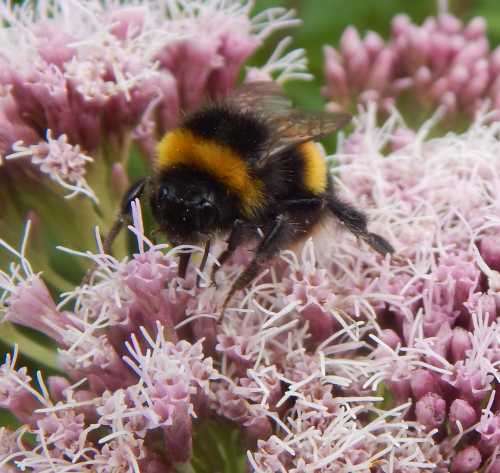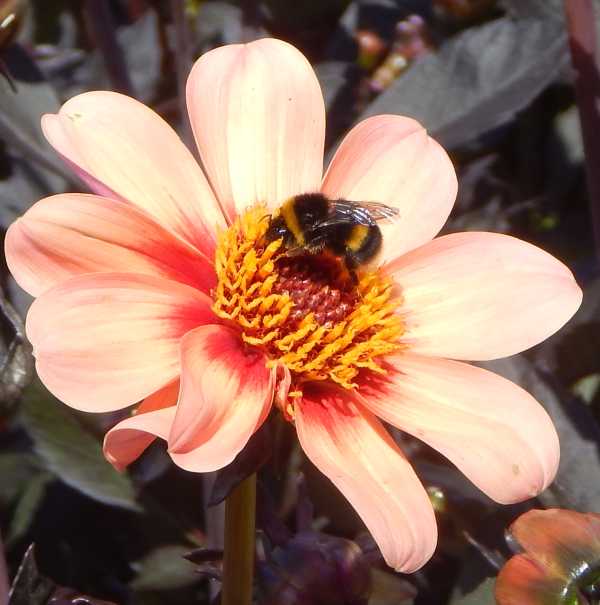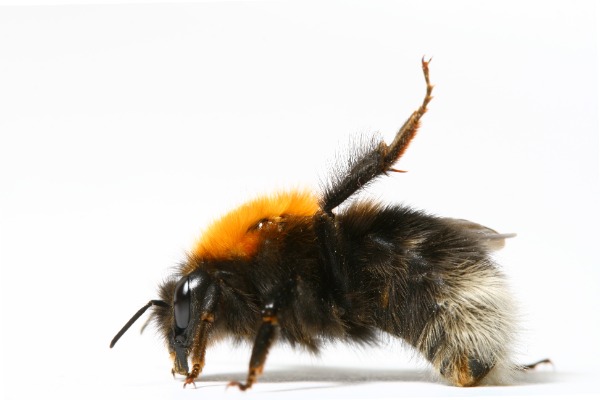Do Bumble Bees Dance?
Since Austrian scientist, Karl von Frisch won the Nobel Prize in 1973 for the discovery that honey bees perform a dance to communicate the location of a source of food, questions have arisen about how other bee species communicate. For example, do bumble bees dance?
Scientists suggest that bumble bees do dance as a form of 'food alert' to other colony members, but this dance is different from that performed by honey bees.
Do Bumble Bees Dance? - What The Science Says
According to a study of Bombus terrestris (buff-tailed bumble bee) by Dornhaus and Chittka (2001)1, a kind of 'dance communication' is sometimes performed, although the dance is less sophisticated than that witnessed in honey bees.
 Buff-tailed bumble bee, Bombus terrestris foraging on poppy (Papaver ssp. )
Buff-tailed bumble bee, Bombus terrestris foraging on poppy (Papaver ssp. )What is the bumble bee dance like, and how is it similar to, or different from the honey bee dance?
The dance performed by bumble bees is quite different from that performed by honey bees.
Whereas honey bees appear to follow a pattern in their dance, in the case of buff-tailed bumble bees, Dornhaus and Chittka noted that following successful foraging trips, back at the nest, bees performed a series of irregular runs, although these runs may last several minutes.
However, Dornhaus and Chittka found no link between duration of dance and distance to food discovered. Instead, they found that buff-tailed bumble bees danced for longer when food had just been discovered. They propose that running serves to distribute a pheromone to fellow colony members, in order to recruit them into foraging.
Dornhaus and Chittka also assert that sudden inflow of nectar into the nest encourages and increases foraging activity among nest mates.
Honey bees, on the other hand, perform a type of 'round dance' in a distinct pattern, with intermittent waggles, using solar navigation, which serve to direct colony members to the location of the food source.
Furthermore, the duration and rate of the waggle run is directly proportional to the distance of the target foraging site - see the honey bee waggle dance.
Here is a video of the dance below:
Do other bee species dance?
Yes, other bees are known to perform a dance in order to communicate the location of food.
For example, Nieh (1998)2 has described the dance of the stingless bee, Melipona panamica. A returning forager enters the nest, and begins producing pulsed sounds as nest mates collect the food from her foraging trip.
The returning forager then performs a dance, which is a series of rapid clockwise and counter-clockwise turns, all the while continuing to produce sound pulses. Faster turns appeared to indicate higher quality food sources.
Communicating food location without dancing
However, other stingless bees have evolved different ways to communicate the location of food.
For example, the stingless bee, Scaptotrigona postica found in Brazil, is known to provide information to fellow colony members about profitable foraging sites, by laying 'scent trails' that lead to them (Lindauer and Kerr 19603).
Ever wondered......
Do bumble bees make honey?

References
1. Dornhaus, Anna, and Lars Chittka. “Food Alert in Bumblebees (Bombus Terrestris): Possible Mechanisms and Evolutionary Implications.” Behavioral Ecology and Socio biology, vol. 50, no. 6, 2001, pp. 570–76. JSTOR, http://www.jstor.org/stable/4602007.
2. Nieh JC (1998) The food recruitment dance of the stingless bee, Melipona panamica. Behav Ecol Sociobiol 43:133–145
3. Lindauer M, Kerr WE (1960) Communication between the workers of stingless bees. Bee World 41:29–71
If you found this page helpful or interesting, I'd really be grateful if you would share it with others - if not this page, perhaps another, such as Gardening For Bees.
Thank you so much :) .

